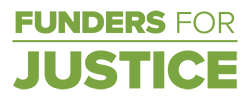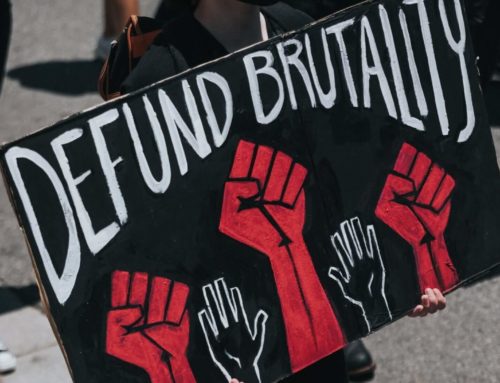Funders Collaborative for Youth Organizing, Jan 9, 2015
As we begin 2015, we at the Funders’ Collaborative on Youth Organizing (FCYO) have been re-inspired by the undeniable potential for young people of color to play a transformative role in advancing social justice. Young people of color are demonstrating a readiness to organize that has not been seen in many years. For funders and others who care about youth leadership and social and racial justice, it is an important time to support the actions taking place across the country to help them coalesce into a sustained movement. For funders who care about young people, education, health and host of other issues, now is the time to invest not just in direct youth services, but also in the leadership of young people to address the roots of inequality. Doing this will require an understanding of current youth organizing forms, strategic use of existing resources, and the identification of new resources and strategies to support the youth organizing field.
The conditions facing young people of color are dire: from violence at the hands of police to deportations to the closure of public schools. In 2014 we saw young people rising to challenge these injustices in ways we could not have predicted. This included massive protests against police brutality in Ferguson, New York, and beyond; continued pressure from undocumented young people for real immigration reform; a host of victories addressing racial disparities in school discipline; and young people leading the People’s Climate March in New York. Taken together, these events signify that a new generation of organizations and leaders for racial and social justice are taking hold.
This is a clear moment when young people of color are ready to organize. It is essential that there are structures to support their ongoing engagement and the growth of their power (research has shown that young people of color are eager to engage in solving issues in their communities, but that the challenge has been the lack of opportunity to do so). The effective support of youth organizing requires an understanding of the diversity of the youth organizing forms that have developed and the different kinds of support needed by each. Of particular importance is how to support both the new organizational forms that have developed out of this moment and require new kinds of support, as well as the established youth organizing groups that play fundamental roles in sustaining this movement. There is also a need and opportunity to bring together these different youth organizing forms to learn from each other and create shared strategy. Based on our experience tracking the field of youth organizing, the following are some of our thoughts on how funders can support the leadership that young people are taking in this moment.
New Strategies for Supporting New Organizational Forms
One of the most exciting things in this moment has been the development of new youth organizing forms that grew in response to particular crisis. Just as organizational forms are changing, philanthropy will need to change to keep up. As supporting organizations such as the Wildfire Project have pointed out, these groups that have grown out of “movement moments” are using a momentum based organizing strategy that differs from traditional community organizing approaches. Funders will need to understand these differences and help these organizations identify appropriate supports. In addition, many of the new organizations are not 501c3s and some will never be. This is true of new organizations growing in places like Ferguson as well as many United We Dream affiliates. While these organizations do not have non-profit status, they are playing crucial roles and need support. An interesting example of an innovative structure to support new leaders is the fellowship program developed by Organization for Black Struggle in St. Louis, which provides stipends and training to young leaders. Funders will have to find new ways to support these organizations as well helping them access training on alternative organizational structures.
Being Ready for the Next Crisis
Funders must also improve how we fund organizations on the ground in crisis moments, as we are without a doubt destined for more events like those in Ferguson, MO, New York, and Sanford, FL. Funders want to be helpful in these moments, but the slow pace of grant cycles and lack of knowledge about who represents authentic leadership on the ground have often been barriers to rapid support. National and local organizers are developing models for how to coordinate activities in these moments as evidenced by groups like the Ferguson Action Team. Funders will also need to think about how we can be better coordinated to support rapid response in the next crisis.
Supporting Existing Youth Organizing Groups
While there is much excitement about new organizations in this moment, it is crucial to recognize that existing youth organizing groups are continuing to play crucial roles. For example, Make the Road New York and its Youth Power Project has played a vital role in protests in New York. Their organizer Jose Lopez was part of the group of young leaders who met with President Obama in December and was recently appointed to the President’s Commission on 21st Century Policing. Jose began organizing with Make the Road at the age of 13 is an example of the kind of leaders developed by youth organizing groups. In addition, three networks largely consisting of youth organizing groups, Alliance for Education Justice, Community Justice Network for Youth, and the Journey 4 Justice Alliance, worked together to organize a National Youth Action Against State Violence in December with coordinated actions across the country connecting police brutality, juvenile justice, and educational justice. As established organizations with deep roots in their local communities, these organizations are able to engage large numbers of young people who have been motivated to become active by recent events and sustain their engagement for the long haul. These organizations are often engaging younger young people (middle and high school age) than other organizations. Engaging young people during adolescent years can support their long-term engagement in social justice. While the field of youth organizing has grown and matured in recent years and these groups play vital roles in movement moments, funding for this work has declined. These groups will need additional resources to support the many more young people who are ready to be engaged.
From Protest to Political Power
With the power of young people rising it will be critical to create a variety of opportunities for them to utilize that power. As one of the fastest growing parts of our society, young people of color represent an increasingly important part of our electorate, but youth have often been an afterthought in elections, and opportunities for them to play meaningful roles have been slim. While youth organizing groups have traditionally been more engaged in issue-based organizing rather than elections, a set of groups have integrated nonpartisan voter engagement into their organizing work with great success, and there is potential for more groups to do the same with proper resources and training. Supporting youth organizing groups that want to include voter engagement in their work could be a powerful way to support this movement to build meaningful political power. FCYO will soon release a report on youth organizing and voter engagement to spur this conversation.
FCYO Field Building Work
FCYO is now preparing to launch a set of new projects to help build a stronger and more stable youth organizing field that is capable of addressing the challenges and opportunities of the current moment. Our new Youth Community Organizing Resource Exchange (Youth CORE, to be announced soon) will create regular opportunities for youth organizing groups from across the country to come together, learn from each other, and develop shared strategy. This will include an upcoming national strategy meeting for groups addressing criminalization of youth of color to discuss how to sustain the momentum of the current moment as well as a large national convening in the fall of 2015 and regular webinars throughout the year. Some of the greatest potential for building meaningful power lies in connecting the different youth organizing forms that have arisen in recent years. In addition, FCYO is developing a new series of learning sessions for funders to deepen knowledge about youth organizing, learn about trends in the field, and discuss strategy for increasing resources for this work. An announcement with dates for upcoming webinars are in person briefings will be coming soon.
Closing: A Pivotal Moment
The demographic shift taking place in the United States creates an opportunity for young people of color to shape the future and create a more just and equitable society, but demography is not destiny and justice and equality are not assured. We are seeing a backlash against young people of color in forms including police brutality, mass incarceration, and voter suppression. Young people are demonstrating their willingness to take on these challenges. The questions are can they turn this moment into a sustained movement and can we help gather the resources needed to do so? While a great deal of funding goes to addressing the symptoms of racial inequality, very little goes to support the leadership of young people of color themselves to address root causes and create lasting systemic change. Now is the time to support the bold leadership of young people.


